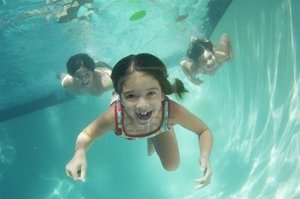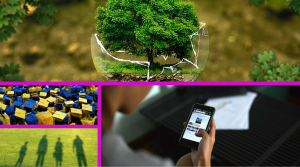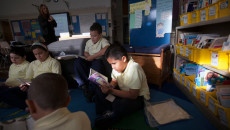LatinaLista — Temperatures are warming up. School is winding down. Kids are looking forward to doing their favorite summer activity — swimming. Unfortunately for too many Latino children swimming can be a death trap. The Centers for Disease Control (CDC) reports that 62 percent of Latino children and 70 percent of black children between the ages of 5 and 14 drown at higher rates than white children.

The reason is simple — they don’t know how to swim. The bad news is that with city budgets being slashed and neighborhood programs being eliminated, a lot of these children may not get the opportunity to learn and that could spell trouble.
The U.S. Consumer Product Safety Commission (CPSC) just launched their annual Pool Safely: Simple Steps Save Lives campaign. The objective is to convince more parents — especially Latino and black parents — to get their children swimming lessons if the kids want to be around the water this summer.
Inez Tenenbaum, safety commission chairman, said “there’s no question” that not knowing how to swim contributes to the deaths of minority children who drown in pools and in natural bodies of water such as lakes, streams or the ocean.
“We are focusing on minority children because the data show they are most at risk for drowning,” she said in a telephone interview with an Associated Press reporter.
“It’s a cultural issue, because many of the African-American and Hispanic children have parents and grandparents who never learned to swim,” Tenenbaum added.
As an incentive to show why swimming lessons are a good idea, the campaign released this year’s statistics on drownings and injuries:
- An annual average of 390 pool or spa-related drownings for children younger than 15 occurred from 2007 to 2009; about 75 percent (293) of the reported fatalities involved children younger than five.
- The majority of the estimated emergency department-treated submersion injuries for 2009 through 2011 and the reported fatalities for 2007 through 2009 were associated with pools.
- Approximately 51 percent of the estimated injuries for 2009 through 2011 and 73 percent of the fatalities for 2007 through 2009 involving children younger than 15 years old occurred at a residence.
- Residential locations dominated incidents involving victims younger than 5 years of age (54 percent for injuries and 85 percent for fatalities).
- Approximately 58 percent of fatalities (annual average of 226) occurred in in-ground pools. Portable pools accounted for 10 percent of the reported fatalities (annual average of 40) to children younger than 15 years of age.
But what do parents do who don’t have money for swimming lessons or can find lessons nearby?
One option is to find lessons — online. In Latina Lista’s research on online swimming classes, one web site stood out. It originates from Australia and is sponsored by Aquatic Achievers, an organization that teaches children how to swim.
The website, uSwim, has instructional videos broken down by age and skill levels that walk parents through each step of teaching children how to swim. Each video has an accompanying transcript that can be printed out and taken to the pool; of course, there’s even an app now that makes it convenient too.
The site is comprehensive in answering questions, providing tips and making the process as enjoyable as possible. And according to the site, it doesn’t matter if a parent knows how to swim or not.
You do not need to swim to be able to teach swimming. Some of our best teachers over the years have been non-swimmers. As long as you are comfortable in the pool, and able to stand with your head above the water and move around freely, you can communicate with the child and show them the correct actions and give appropriate support.
While it would be ideal for kids to be enrolled in a swimming class, this site offers the next best alternative in keeping children safe around the one activity almost every child can’t wait to dive into.





Comment(4)
goodheartedsociopath
What kind of a minority brain thinks up crazy ideas like this. All children should be taught to swim and it’s the parent’s responsibility to facilitate it.
MarisaTrevino
No one disputes that all children should be taught swimming lessons but lessons cost money and the low-income, of which the most are “minority”, don’t have the extra funds to do this. It’s not a crazy idea nor a “minority brain” that recognizes this but obviously people who see a disturbing trend and want to call the public’s attention to it.
goodheartedsociopath
@MarisaTrevinoNonsense Marisa, parents can teach their kids, if they don’t know how, it’s a good time to learn. We don’t need anymore specialized programs that eat at this country from the inside. We all have to stand up and take responsibility for ourselves. Low income, I was low income all my life and I never looked, expected or received any aid from anyone. Even when I had two kids in university at the same time we borrowed and paid off the loans in time, never had any help from anyone. Dropping that term “minority” might help also.
One last thing, Marisa, you have a beautiful face.
Swimming with the kids? Play it safe
[…] to Latina Lista, uSwim states that a parent does not need to know how to swim in order to teach their […]